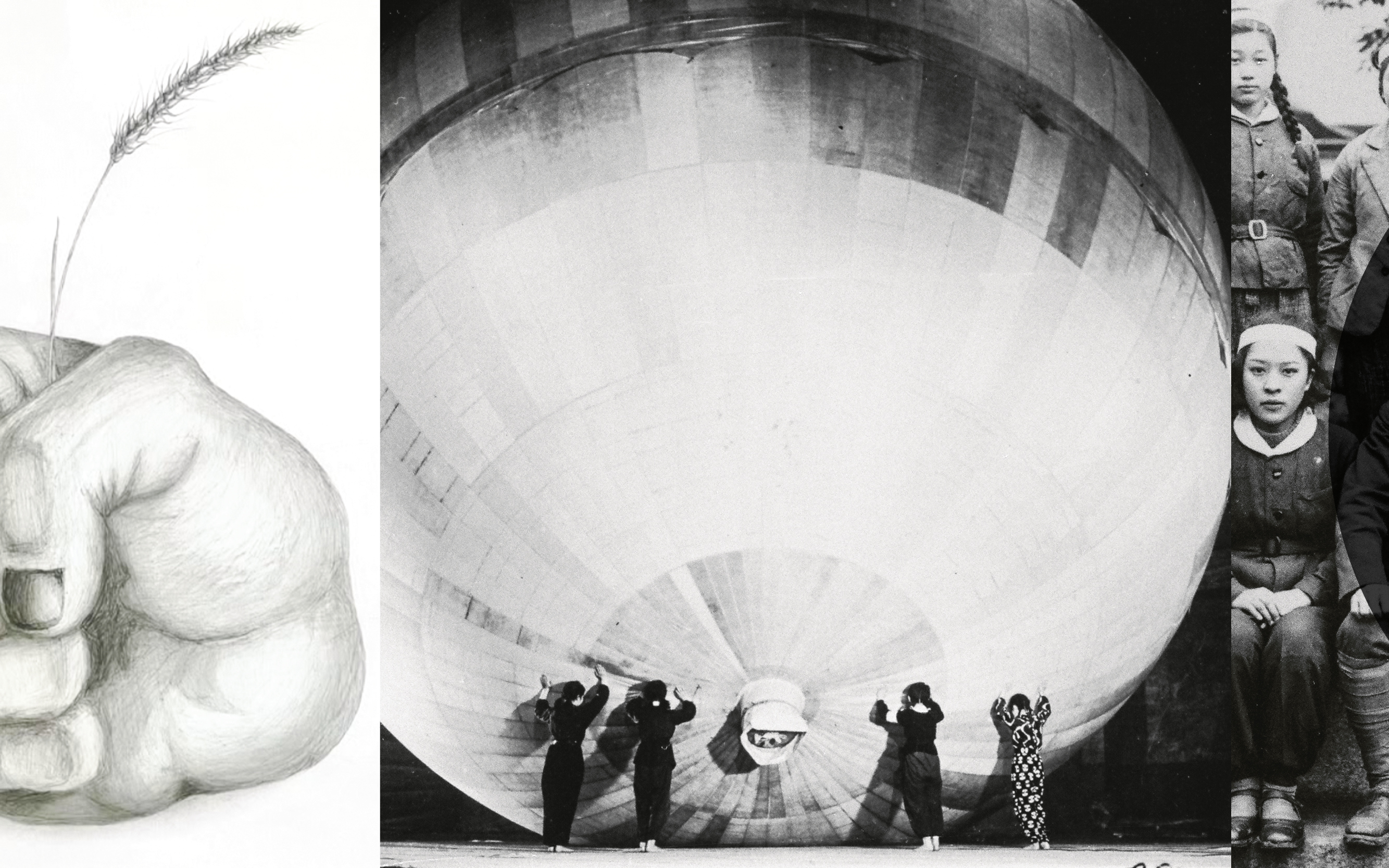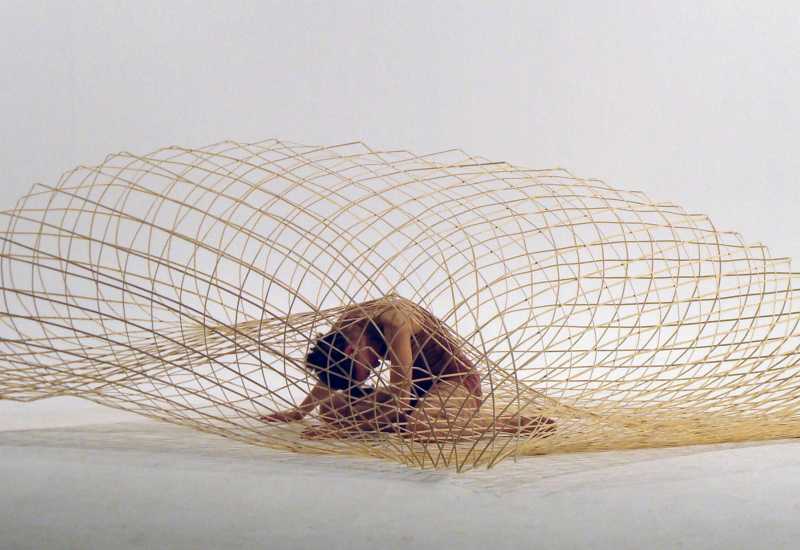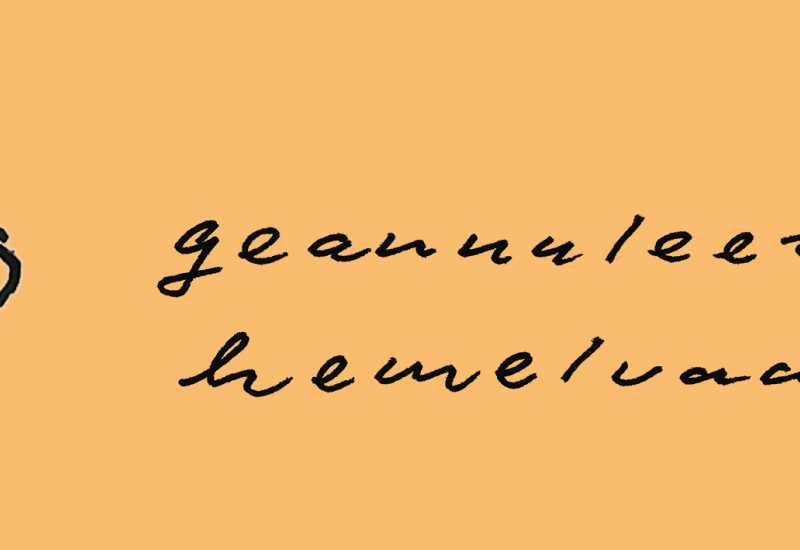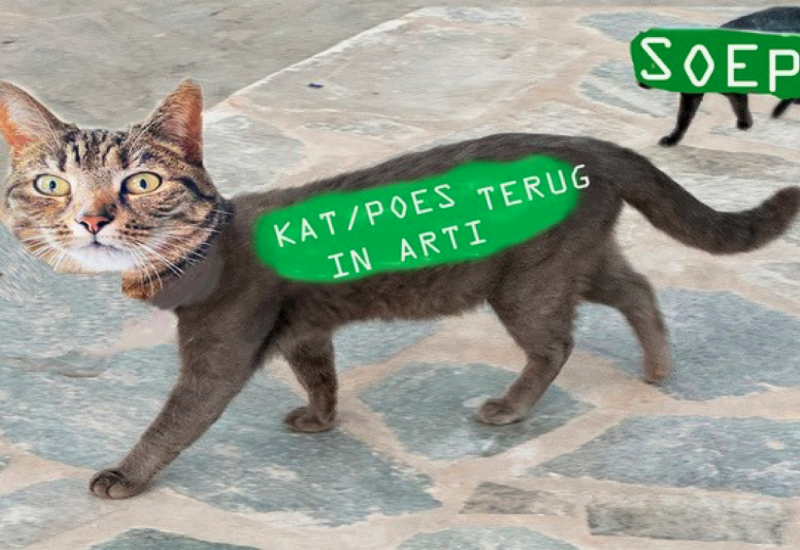BACKUP.VAVILOV
An exhibition about seeds, war and strength of spirit
The BACKUP.VAVILOV project highlights the crucial role of genetic plant diversity in ensuring global food security, inspired by the life and legacy of Soviet scientist Nikolai Vavilov. The exhibition presents works by artists engaged in scientific, historical, and social initiatives: Kumi Hiroi, Muge Yilmaz, Maarten Vanden Eynde, De Onkruidenier (Jonmar van Vlijmen, Rosanne van Wijk, and Ronald Boer), Olga Ganzha. With participation of Louise O. Fresco and Susan Kooi. Curated by Natalia Sudova.
Opening: Friday June 20 at 7.30 PM
"Naturalization Ceremony” by Müge Yilmaz
Müge Yilmaz leads a symbolic adaptation of the Dutch citizenship oath. Participants pledge to protect heirloom seeds and biodiversity, paralleling how seeds and individuals must adapt to new environments. Each participant receives a bag of local seeds, symbolizing growth and interconnectedness.
There are several events during the exhibition:
5 July 15.00: Conversation with professor Louise O Fresco about her fascination with Vavilov.
13 July 15.00-16.00: Tasting with tulip bulbs by Susan Kooi.
24 July 12.00pm: How can we contribute to a plant's memory?
.jpg)
The project BACKUP.VAVILOV raises a profound question: What is the true value of a seed if it can inspire some to attack and kill, while others heroically defend it - even at the cost of their own lives?
The starting point of the exhibition is the story of the Siege of Leningrad during World War II. While the majority of its casualties - up to 1.5 million - died of hunger rather than bombs, a small group of scientists from the All-Union Institute of Plant Industry (VIR) protected the world's first genetic seed bank. Nine of VIR’s employees perished from starvation in a room filled with seeds, choosing not to consume them in order to safeguard the future of agricultural development - continuing a lineage of seed cultivation that began with ancient farmers.
This heroic act reflects the spirit of Nikolai Vavilov, the founder of VIR, who dedicated his life to protecting biodiversity. He traveled to 64 countries, collecting seeds, grains, and roots to create the largest collection of cultivated plants in the world at that time. He also developed the theory of the Centers of Origin of Cultivated Plants and formulated the Law of Homologous Series in Hereditary Variation - a principle that helped predict plant traits across related species, guiding plant breeding efforts globally.
Although Vavilov's scientific vision was far ahead of his time, he was arrested and later died of starvation in prison under Stalin’s regime. His story reminds us that knowledge and freedom of thought are often endangered by authoritarian power.
The exhibition connects this historical narrative with today’s world. Despite advances in science and the existence of global networks to protect genetic material, modern wars and climate disasters still threaten biodiversity. The project brings together artists of different nationalities and backgrounds, each exploring this topic through their own cultural and emotional perspectives. It reminds us that while war has borders, nature does not.
De Onkruidenier, ‘On the Same Ribbon’ 2025
The work On the Same Ribbon is based on Nikolai Vavilov's original 1926 definition of 7 centers of origin for locating the original DNA of all food crops on earth. Can we still speak of geographical ties to centers of origin at a time when climate zones are shifting, species are migrating and terms such as indigenous and invasive are under pressure?
Conventional scientific classification models have led to the loss of local knowledge infrastructures, cultural values, and parataxonomic traditions in favor of a globally uniform system. In contrast to the scientific approach to plants, de Onkruidenier seeks the soul of an ecosystem, focusing on connection, imagination, and interspecies relationships. A visit to the National Institute of Genetics in Mishima (Japan) in the fall of 2024 led to the discovery that lime plays a crucial role in the memory of an ecosystem.
With the installation, the collective refers to the modernist grid in the Schaduwtuin, a walled artist's garden in the Amstelpark. In the Schaduwtuin, the Onkruidenier explores artistic forms of speculative taxonomy.
Kumi Hiroi
‘Veronica Persica Balloon’, movie 2025
Japanese artist Kumi Hiroi, based in the Netherlands, presents Veronica Persica Balloon, a poetic short film that explores the impact of war through two interconnected lenses: the manipulation of young girls during World War II and the mutation of nature caused by nuclear fallout.
The film contrasts the story of Fu-Go balloon bombs - assembled by female students as part of Japan’s wartime labor - with the genetic mutation of the veronica persica flower near Hiroshima, studied by scientists after the atomic bombing. Though these findings revealed increased mutation rates near the hypocentre, the research was suppressed internationally to preserve postwar political narratives. Guided by the questions, "How do national manipulation and cultural mutation sustain war?" and "How does warfare-induced genetic mutation affect future generations?", Hiroi invites viewers to reflect on the long-term, often hidden consequences of conflict - on both people and the environment.
Tulip Mania, Sculpture, glass, wood, 2024
Japanese artist Kumi Hiroi, based in the Netherlands, presents a sculpture called Tulip Mania, crafted from glass and wood. The work represents both the cultivated tulips and the people who see in them not only beauty, but also wealth. The tulip bulb is intentionally oversized, as if to overwhelm the viewer evoking how beauty, when commodified, can expand beyond its natural bounds. Hiroi encountered glass as a material during field research on tulip production in Toyama, Japan - a region renowned for both tulip cultivation and glass craftsmanship. The glass elements are sandblasted, giving them a soft, matte texture, while the wooden components are shaped like sprouts emerging from the bulb, symbolizing growth and transformation.
Maarten Vanden Eynde
Taxonomic Trophies, 2005 - ongoing
Hunting and gathering is one of man’s most fundamental activities. Originally a nomadic survival strategy, as humans settled in one spot and domesticated plants and animals, hunting became a sport or amusement. The ‘trophies’ from a successful kill were a way of impressing other people. In rarer cases hunting was organised for scientific purposes, to preserve a particular endangered species or prevent the spread of alien invasive species. 'Taxonomic Trophies' is a growing collection of branches from all over the world, saved and presented as endangered or extinct species. They question values and status symbols of power and financial means, while confirming our insatiable desire to accumulate and collect.
Future Flora: Luna, 2025
Biodiversity is in dangerous decline. One of the ways in which the survival of as many different plant species as possible is being secured is the creation of gene banks in seed vaults and time capsules. In 2008, Norway opened the Svalbard Global Seed Vault, which stores a collection of duplicate samples of seeds, as a backup in case of regional or global disasters. In 2018, the collection surpassed one million samples, comprising more than one-third of the world’s most important food crop varieties. Among the seeds stored in Svalbard are also samples from the Vavilov Institute of Plant Industry in Leningrad - the world’s first seed bank, founded by botanist Nikolai Vavilov.
However, the increase in temperature in the Arctic is more pronounced, causing the first floods in 2016. Thus began the search for a new ideal place to store seeds, leading to the idea of a seed bank on the Moon. Future Flora: Luna depicts the doomsday seed vault planned to be built there. It combines the blueprints of the proposed seed vault, visualized as copper circuitry on large-scale printed circuit boards (PCB), with a wide variety of seeds collected from around the world.
Muge Yilmaz, ‘A Brief History of Naturalisation’, 2025
A Brief History of Naturalisation is a video and installation work that parallels the artist’s journey to Dutch citizenship with the tulip’s historical migration to the Netherlands. Set within a sculptural nomadic tent, an allusion to Yilmaz's originals, the piece explores themes of belonging, exclusion, and in-betweenness. A 15-minute video blends personal narrative, science fiction, and humor, featuring plant-human hybrids and reflections on cultural integration. Surrounding the tent are original documents from the artist’s naturalization process. The work culminates in a participatory performance declaring visitors as “citizens of Earth,” reclaiming bureaucratic rituals as collective acts of ecological and social solidarity.
Olga Ganzha, mural ‘kulak’, 2025
The term kulak referred to wealthier farmers in late Imperial Russia and became a label for class enemies after the Russian Revolution. Demonized by the Bolsheviks, they were accused of hoarding grain and exploiting the poor. In this project, a charcoal drawing of a giant fist gripping fragile grain becomes a powerful metaphor - evoking life’s fragility, ancestral memory, and the human instinct to preserve. With familial ties to kulaks, Ganzha reflects on survival and heritage, connecting her work to the legacy of botanist Nikolai Vavilov, who devoted his life to preserving agricultural biodiversity. Nikolai Vavilov and the kulaks suffered from the oppression in different periods of Soviet power and became victims of Soviet repressive systems. Metaphysically speaking, they had a common goal: to feed the people and ensure a sustainable future. Ganzha’s work becomes a reflection on resilience, loss, and the enduring struggle to protect cultural and biological inheritance.
Louise O Fresco, documentary film ‘The apple's journey’ (1 of 6 series ‘Fresco's paradise’), 2013
Louise dedicated her life to food and agriculture and wrote many books about the subject. In particular, she published a fictional biography of Nicolai Vavilov, called ‘The Planthunter from Leningrad’ (in Dutch).
In the six-episode series ‘Fresco's Paradise’, Professor Louise Fresco travels around the world. Her motto is: “Food is knowledge and responsibility.” She is searching for her paradise: a world where there is enough food for everyone and where everyone is healthy - a paradise in which farmers and consumers, city and countryside, are reconnected. Fresco shows how science and the power of engaged consumers can be vital tools in the effort to feed the world sustainably.
The episode ‘The Apple’s Journey’ follows Louise’s search for the wild apple trees first documented by Nikolai Vavilov in the mountains along the Kazakhstan-China border (as well as the gene vault in Svalbard), and tells part of Vavilov’s story.
The documentary was financed by Dutch public broadcaster Human and directed by Marjoleine Boonstra.
Supported by AFK Foundation, WE Jansenfonds, Iona Stichting, Mondriaan Fund, het Cultuurfonds, VriendenLoterij Fonds



